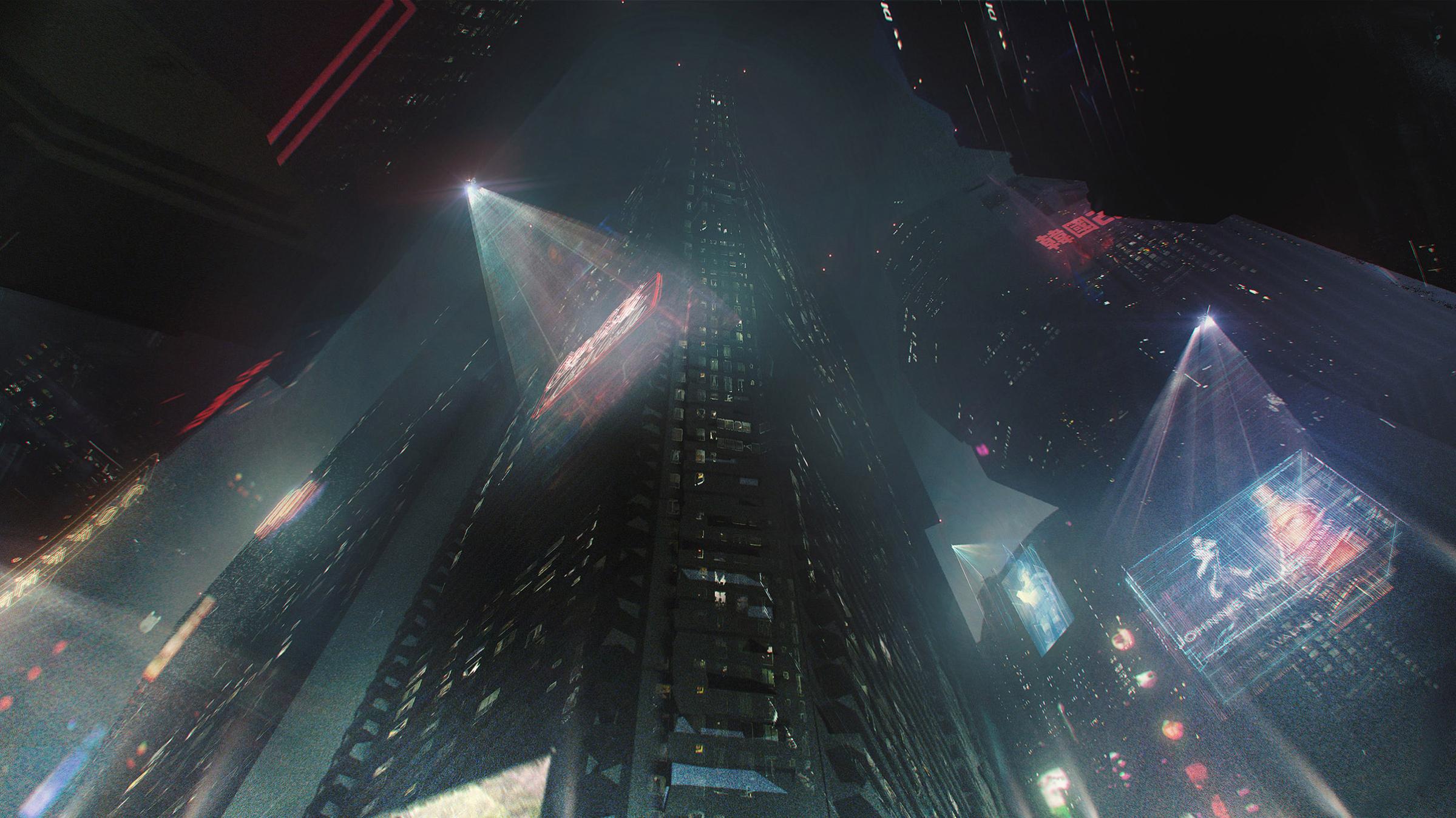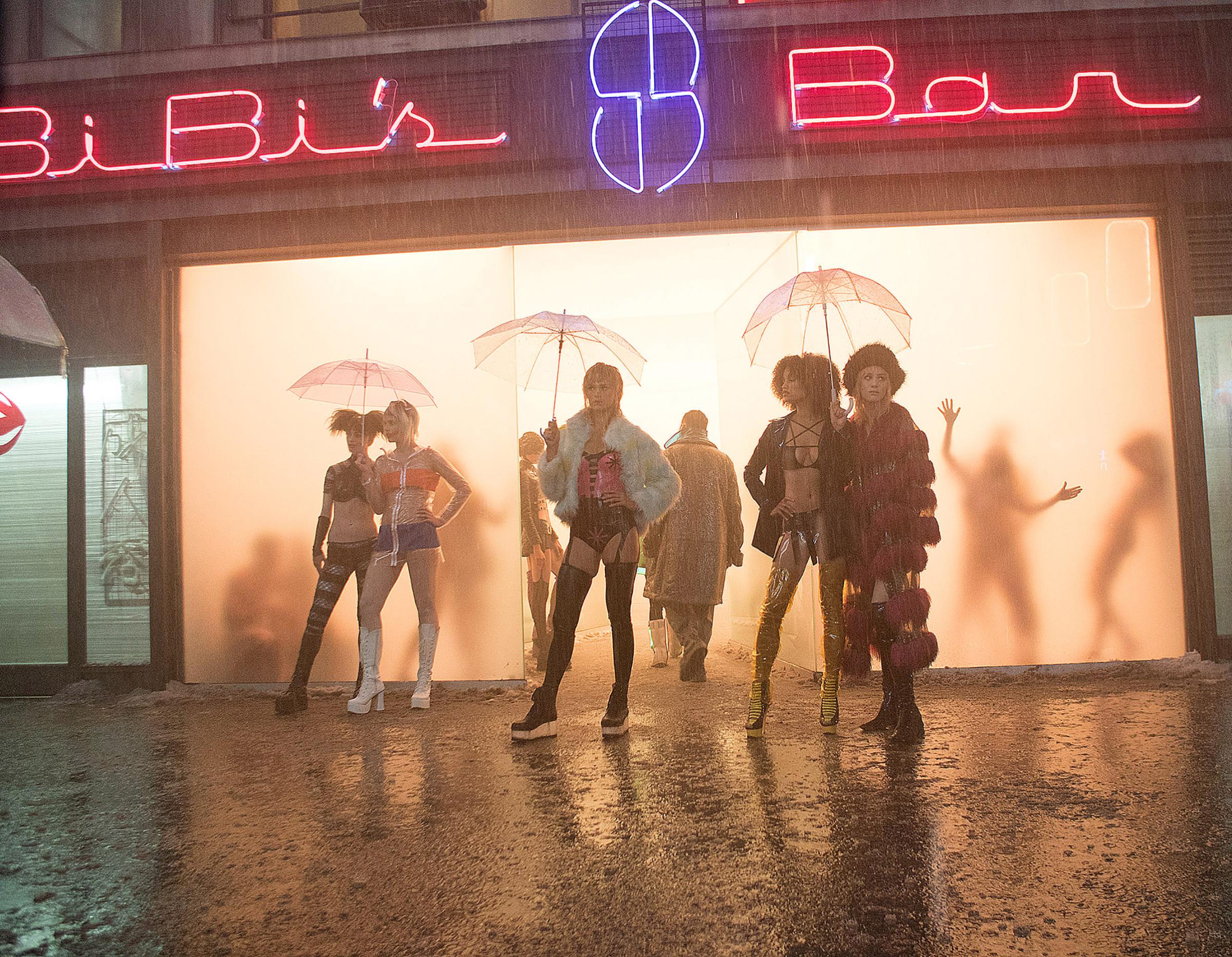More than anything, Blade Runner is a story about the end of empire, capitalism taken to its grim logical conclusion. That is the case for both the 1982 classic directed by Ridley Scott and the long-awaited sequel, Blade Runner 2049 (out Oct. 6), starring Harrison Ford and Ryan Gosling. The profit motive has destroyed the environment; the wealthy have fled to interplanetary colonies; and those who remain on Earth — humans and androids alike — live in dense squalor congested by pollution and garish advertisements.
And yet, it’s also beautiful. Director Denis Villeneuve (Arrival) says that despite the bleakness of Blade Runner 2049‘s subject matter, his film is fundamentally an optimistic one. He spoke to TIME about illustrating this vision, bridging the three-and-a-half-decade gap between the original and his sequel, and why his film needed a hopeful coda.
You faced a daunting task: not only making a sequel to one of the most celebrated films of all time, but also dealing with a highly specific visual world. What traits of the original film did you feel you needed to preserve?
Villeneuve: In the first movie, you were seeing layers of time. Most of the time in sci-fi movies, the world is purely a vision of the future, but in the original Blade Runner, you felt the dirt that was coming out of ages. That was something I wanted to bring back.
I wanted to make sure that we were as specifically true to film noir as the first movie was. I wanted the atmosphere to carry the beautiful melancholy that was so powerful in the first movie. I wanted the world to be one of bleakness and gloom but to have sparks of beauty — coming out of technology or humanity.

How do you update a vision of the future from 35 years ago?
Ridley built this movie as an extension of the late-70s. He took the main currents of the 70s — the fashion, the aesthetics — and brought them into the future. Me, I had to struggle with the problem of having to deal with a movie that was made in 1982 that talked about 2019. Twenty-nineteen is tomorrow. As we all know, there’s a difference between the future world of Blade Runner and today’s reality. So I came to the conclusion that I needed to deal with an alternate universe, to start with the world of the first Blade Runner and extend it into future in order to create continuity between the films.
I went back to all the cultural references of the first movie and imagined how they would evolve in the future. And then I went back to the Philip K. Dick novel and explored the geopolitics of the book. In the book, the U.S.S.R. was still present. I thought that it would be interesting to think — what if the U.S.S.R was still alive? What if it was as strong a cultural and economic force as the U.S., but with different political laws? You see McDonald’s in Moscow. What if you saw Russian products in the streets of Los Angeles? I thought that would create an interesting distorted reality that would tell my audience right from the start that they’re in a different world with different laws from a geopolitical point of view.
One major continuity is the pervasiveness of advertising in this world.
Yeah. I didn’t want to come back to the fantastic image of the blimp [in the original Blade Runner] that I felt belonged to the first movie. I decided I would use different technology, like drones that can project 3D images into the smog, because the smog is so thick. In this universe, the ocean has risen, most of Eastern Asia has been flooded, and there are many refugees who’ve come to Los Angeles from everywhere in the world. The ads themselves express the blend of cultures.
In this world, there’re no more countries, only a few megapolises — Los Angeles, maybe New York, maybe London, maybe Ouagadougou — that survived because they were built around spaceports. You see refugees coming from everywhere, huddling around those spaceports. The idea is to leave Earth. The police is there to keep the population under control while they’re still on Earth.
The environment is another major theme.
I wanted to show humanity’s relationship with nature — how human beings are disconnected more and more from nature, how we are trying to control nature. There is a lack of humility. We are trying to control nature when that nature is stronger than us by far. At the end of the day I don’t know anyone who will outlast nature.

I couldn’t help but appreciate the costume design in the movies. What inspired the wardrobe of the film — particularly in your costumes for women?
Winter was the strongest influence here. The clothes were designed to withstand a very harsh, cold environment that shifts from rain to snow to icy rain very quickly. It was the work of Renee April, my costume designer. I worked with her on several movies and I knew that she was tired of doing military uniforms after Sicario and Arrival and police uniforms after Prisoners. I knew at once that she’d have a playground in which to express herself. She sees costume design as all about characters. She did a lot of research and was inspired by what she saw as the psyche of each character — she wanted to express it through their clothes.
I sought a winter-like quality for this world. Those are elements that feel very close to home, to Montreal. Winter has an impact on people’s behavior: you don’t walk the same way, you don’t talk the same way, you don’t think the same way in winter.
You had a strategic advantage over Ridley Scott, in that the cinematic technology available to you has vastly improved since 1982. How did you decide where to draw the line between using current special effects technology to emphasize your vision and embracing practical effects?
It’s important to underline the fact that Ridley Scott and Douglas Trumbull’s special effects in the original movie are a work of genius. It’s so complex what they did. I didn’t have to struggle with the same technological challenges as they did. That has to be put into perspective.
We had a lot of technological challenges during this movie, but we also had the power of computers. I wanted this power — the technicality of the movie — to be in the background, not in the foreground. In the foreground I wanted humanity. I wanted the actor in the center of my focus. I wanted to give them everything as much as possible to inspire them. So we built all the sets first, constructed all the vehicles, did all the rain and the snow and the fog with practical effects. All the streets, all the exteriors — we constructed everything. There’s a scene where you see a Spinner [a.k.a. a flying car] inside a penthouse — that was real. It’s a nice blend of a very old passionate approach and high-end technology. I feel that CGI is very strong when it’s helping reality, helping real shots. But to start just from CGI is a challenge and not something I wanted to do.

Last question: It can be argued that Blade Runner is a cynical film. It envisions a future of decay. But the visual majesty of the movies — the original and yours — connotes a certain optimism. Is 2049 an optimistic film?
I think so. For me, one of my goals was to create a bleak world with strong sparks of beauty coming out of it. That’s why the first sequence, where Officer K (Gosling) is flying towards Los Angeles, is a gray, overcast, dark, austere landscape with winter light. Suddenly you have sparks of light coming out of the landscape’s technology, and that creates beauty. The humanity of the characters creates beauty.
It’s a movie that I feel has, in a strange way, an optimistic ending. I’m glad about that, because I need to have that kind of optimism in the world today.
More Must-Reads from TIME
- Caitlin Clark Is TIME's 2024 Athlete of the Year
- Where Trump 2.0 Will Differ From 1.0
- Is Intermittent Fasting Good or Bad for You?
- The 100 Must-Read Books of 2024
- Column: If Optimism Feels Ridiculous Now, Try Hope
- The Future of Climate Action Is Trade Policy
- FX’s Say Nothing Is the Must-Watch Political Thriller of 2024
- Merle Bombardieri Is Helping People Make the Baby Decision
Contact us at letters@time.com